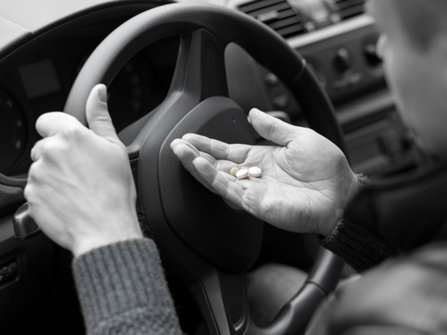Drugs Make for Very Dangerous Drivers

Across the country, drunk driving statistics have been dropping while the number of drivers impaired by drugs has been climbing. The problem is that we don’t yet have good standards for determining impairment by drugs like we do for alcohol. But just like with alcohol, when a person is dulled by his use of marijuana, heroin, painkillers, methamphetamine or other drugs, he endangers those around him if he drives while in this condition.
Standards will need to be developed so that law enforcement has the legal right to charge impaired drivers appropriately. In the meantime, there is an overwhelming amount of evidence that a drugged driver is very often a dangerous driver.
Marijuana
The National Highway Transportation Safety Administration (NHTSA) has documented the way marijuana impairs a driver’s ability. They have concluded that this drug causes the following changes:
- Altered time and space perception
- Lack of concentration
- Panic reactions and paranoia
- Dulling of attention
- Image distortion
- Increased reaction times
Short and long-term changes include difficultly in thinking and problem-solving, increased difficulty sustaining attention and shifting attention to meet the demands of changes in the environment. It is very easy to imagine that driving requires all these abilities!
A report issued by the AAA Foundation for Safety in 2016 noted that fatal crashes involving drivers who had used marijuana doubled in Washington after the state legalized the drug for both recreational and medical use. Tragically, it appears that more people will suffer injuries and even deaths as more states legalize marijuana use.
Heroin and Opioids (Painkillers)
Marijuana and alcohol are not the only substances making unsafe drivers. More drivers are being found impaired by opioids. Sometimes they even have their kids in the car with them.
With all drugs and opioids, in particular, a person’s tolerance to the drug can be a major factor in whether a person can safely drive. Some people on opioids medically have been determined to be safe to drive, but when a person is abusing an illicit opioid, or he has not yet developed a tolerance for the drug, the outcome can be disastrous.
Investigations into cases where the driver tested positive for opioids revealed the following problems:

- Slow driving
- Weaving
- Poor vehicle control
- Slow response to stimuli
- Difficulty in following instructions
- Falling asleep at the wheel
The phenomenon of opioid-impaired drivers soared into public attention after an Ohio grandmother was rushed to the hospital by her boyfriend when she overdosed on heroin. After driving erratically, the driver (also impaired by heroin) finally got the car stopped and passed out completely. The woman’s four-year-old grandson looked on from a child’s car seat in the back.
This was far from the only case. In October 2016, a 25-year-old Pennsylvania mother overdosed in her car with a 10-month-old child crying in the back seat. Police released a photo from the scene to inform the public of what they were dealing with “on a daily basis.”
In February 2016, heroin use was the cause of a terrible rollover crash in Kentucky. The heroin-using driver was killed and a seven-month-old baby was ejected from the car but survived. The child’s parents also survived but were also high on heroin at the time. They were charged for putting the child at serious physical risk. Also in Kentucky, four people died after a driver under the influence of marijuana, heroin and fentanyl slammed into a car in one of the opposite lanes.
Common sense and the evidence above indicates that the safest drivers are those who are sober. But it’s hard to legislate common sense. Parents who carefully teach their children about the value of sobriety do themselves, their children and society a great service.
REFERENCE LINKS
NHTSA information on drug impairment is available here: http://www.nhtsa.gov/people/injury/research/job185drugs/index.htm


